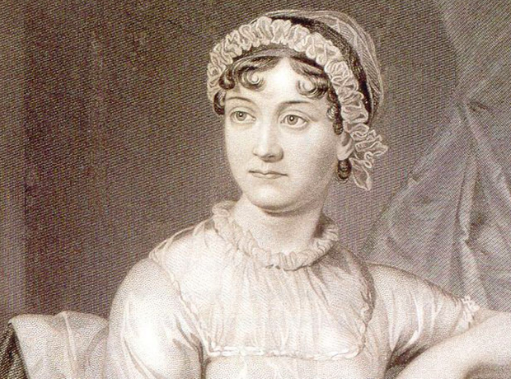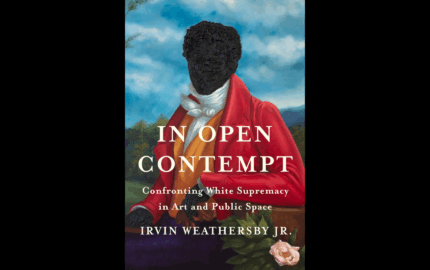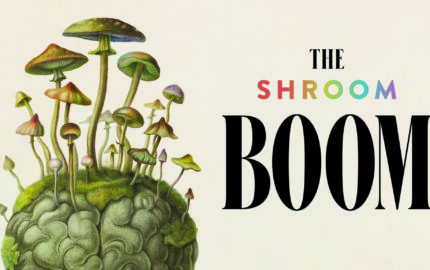My mother’s reverence for education, a solid grounding in middle-school grammar, and a long career in old-school journalism has chiseled me into one of those people who honors language, and tries to be precise — at least when I write as a professional. If I break the rules, I like to think it’s because I know them well enough to break them for a reason. If I'm not sure, I race to my shelf of grammar books (like I said: old school) for back-up.
So I struggle with embracing “they” as a singular pronoun. I have recast countless sentences trying to get around singular-plural disagreement. (ex: “When a writer struggles, it’s often because they lack focus.”) At the same time, I am one of those feminists who fought against “he” as the default stand-in; I felt it erased women, much as my gay friends have told me they felt erased by movies or music that cast all love stories as heterosexual.
Yet I wince at at the cumbersome solution of two gendered pronouns. (That struggling writer? “…it’s often because he or she lacks focus.” Yeah, that flows.)
Linguist and UC Berkeley prof Geoff Nunberg has me thinking again about the open-minded value of “they,” “them,” and “their.” In a recent piece for NPR’s “Fresh Air,” he frames the debate not as one about sloppy grammar, but as an homage to the flexibility of language, and respect for nonbinary people.
Two years ago, AP changed its style guide to occasionally allow the singular “they.” I bristled at the news — though not nearly as I shuddered at the literally-figuratively-virtually mash-up.
Nunberg has convinced me it’s time to relax, lest I become one of those “schoolroom crotchets” he teases about. And it helps to know that the eminent Ms. Jane Austen was not so uptight with her writing, because when someone enters the world of “Pride and Prejudice,” they are transformed.
(By the way, I couldn’t find “crotchet” in any of the dictionaries I consulted. But here’s to words as we use them, like nounizing an adjective.)
None of this relieves the writer from the imperative of respecting the reader. And in journalistic writing, respect walks with clarity, and clarity often comes with precision, and precision is built through control of the basic tools, like grammar. You don't have to have a grammarian's grasp of labels and terms. (I once mumbled, during a workshop, that I wouldn't know a subjunctive if it rose up and bit me in the bum. Someone in the room laughed and said: "I think you just used one.")
But shrugging off the need to know basic grammar is as dangerous to this work as shrugging off the need to know basic math. At the very least, you should know when to look something up — which is almost always.
And because we are talking about pronouns, here's a particular case in point for now:
Be watchful of those handy little stand-ins like he, she, it, that and there when used as nouns. As an editor, I like to work with the high-flying challenges, like story focus and substance and structure. But I often find myself flyspecking the little things that odd up to big confusion — or frustration — for the reader. He, she, it, that and there are top of my watch list.
You, as the writer, know what or whom you are referring to when you plop them into your piece. But the reader doesn't. They are likely reading fast, and any stumbles — I think of them as speedbumps — can cause them to turn off the road of your story. (Look: I just used "they" and "them" to refer back to the singular "reader." It was painful. I wrote it correctly to honor singular-plural agreement, then rewrote it back to make a point. I also am peppering this parenthetical passage with "it," hoping to demonstrate how clarity stands on a cliff's edge. If you knew, without thinking, what "it" referred to, I stayed on solid ground. If you had to look back for the original reference — I think it's called the antecedent — I am on my way to the rocks below.)
So when you write, and slip in what I call nonspecific pronouns, ask yourself: Will the reader know, immediately, what they are subbing for? This is especially important when you have multiple people of the same gender in a passage of your story, then keep writing about all of them with the same pronoun.
As for those go-to grammar books, here are some of my faves:
And if you're not old school, PDFs or good summaries of most of the above can be found online.
So I struggle with embracing “they” as a singular pronoun. I have recast countless sentences trying to get around singular-plural disagreement. (ex: “When a writer struggles, it’s often because they lack focus.”) At the same time, I am one of those feminists who fought against “he” as the default stand-in; I felt it erased women, much as my gay friends have told me they felt erased by movies or music that cast all love stories as heterosexual.
Yet I wince at at the cumbersome solution of two gendered pronouns. (That struggling writer? “…it’s often because he or she lacks focus.” Yeah, that flows.)
Linguist and UC Berkeley prof Geoff Nunberg has me thinking again about the open-minded value of “they,” “them,” and “their.” In a recent piece for NPR’s “Fresh Air,” he frames the debate not as one about sloppy grammar, but as an homage to the flexibility of language, and respect for nonbinary people.
Two years ago, AP changed its style guide to occasionally allow the singular “they.” I bristled at the news — though not nearly as I shuddered at the literally-figuratively-virtually mash-up.
Nunberg has convinced me it’s time to relax, lest I become one of those “schoolroom crotchets” he teases about. And it helps to know that the eminent Ms. Jane Austen was not so uptight with her writing, because when someone enters the world of “Pride and Prejudice,” they are transformed.
(By the way, I couldn’t find “crotchet” in any of the dictionaries I consulted. But here’s to words as we use them, like nounizing an adjective.)
None of this relieves the writer from the imperative of respecting the reader. And in journalistic writing, respect walks with clarity, and clarity often comes with precision, and precision is built through control of the basic tools, like grammar. You don't have to have a grammarian's grasp of labels and terms. (I once mumbled, during a workshop, that I wouldn't know a subjunctive if it rose up and bit me in the bum. Someone in the room laughed and said: "I think you just used one.")
But shrugging off the need to know basic grammar is as dangerous to this work as shrugging off the need to know basic math. At the very least, you should know when to look something up — which is almost always.
And because we are talking about pronouns, here's a particular case in point for now:
Be watchful of those handy little stand-ins like he, she, it, that and there when used as nouns. As an editor, I like to work with the high-flying challenges, like story focus and substance and structure. But I often find myself flyspecking the little things that odd up to big confusion — or frustration — for the reader. He, she, it, that and there are top of my watch list.
You, as the writer, know what or whom you are referring to when you plop them into your piece. But the reader doesn't. They are likely reading fast, and any stumbles — I think of them as speedbumps — can cause them to turn off the road of your story. (Look: I just used "they" and "them" to refer back to the singular "reader." It was painful. I wrote it correctly to honor singular-plural agreement, then rewrote it back to make a point. I also am peppering this parenthetical passage with "it," hoping to demonstrate how clarity stands on a cliff's edge. If you knew, without thinking, what "it" referred to, I stayed on solid ground. If you had to look back for the original reference — I think it's called the antecedent — I am on my way to the rocks below.)
So when you write, and slip in what I call nonspecific pronouns, ask yourself: Will the reader know, immediately, what they are subbing for? This is especially important when you have multiple people of the same gender in a passage of your story, then keep writing about all of them with the same pronoun.
As for those go-to grammar books, here are some of my faves:
- Sin and Syntax, by Constance Hale
- The Glamour of Grammar, by Roy Peter Clark
- Woe is I, by Patricia T. O'Conner
- The Transitive Vampire, by Karen Elizabeth Gordon
- Sister Bernadette's Barking Dog, by Kitty Burns Florey
- Vex, Hex, Smash, Smooch, by Constance Hale
- And, of course, Elements of Style, by Strunk and White. I am particularly enchanted by the illustrated edition.
And if you're not old school, PDFs or good summaries of most of the above can be found online.



